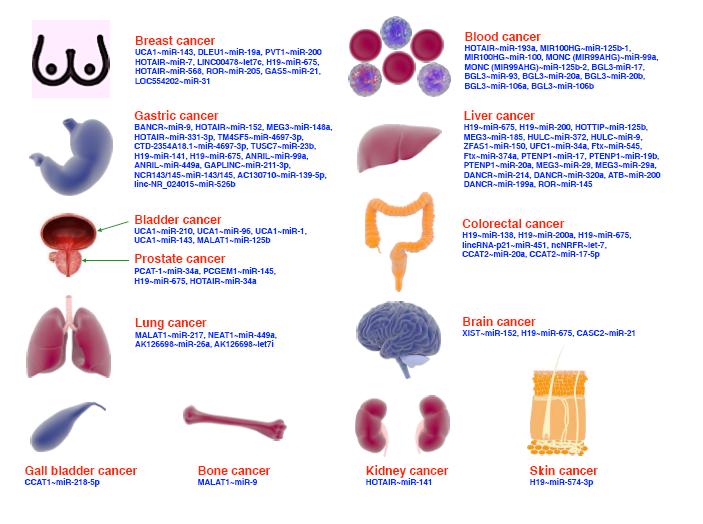| 1. |
Sung H, Ferlay J, Siegel RL, et al. Global cancer statistics 2020: GLOBOCAN estimates of incidence and mortality worldwide for 36 cancers in 185 countries. CA Cancer J Clin, 2021, 71(3): 209-249.
|
| 2. |
Chen S, Cao Z, Prettner K, et al. Estimates and projections of the global economic cost of 29 cancers in 204 countries and territories from 2020 to 2050. JAMA Oncol, 2023, 9(4): 465-472.
|
| 3. |
Global Burden of Disease 2019 Cancer Collaboration, Kocarnik JM, Compton K, et al. Cancer incidence, mortality, years of life lost, years lived with disability, and disability-adjusted life years for 29 cancer groups from 2010 to 2019: a systematic analysis for the global burden of disease study 2019. JAMA Oncol, 2022, 8(3): 420-444.
|
| 4. |
Bai R, Dong W, Chu M, et al. Trends in mortality due to tracheal, bronchial, and lung cancer across the BRICS: an age-period-cohort analysis based on the global burden of disease study 1990-2019. Chin Med J (Engl), 2024, 137(23): 2860-2867.
|
| 5. |
中华医学会呼吸病学分会. 早期气管、支气管肺癌诊断中国专家共识(2023年版). 中华结核和呼吸杂志, 2023, 49(1): 1-18.
|
| 6. |
Shintani Y, Kimura T, Funaki S, et al. Therapeutic targeting of cancer-associated fibroblasts in the non-small cell lung cancer tumor microenvironment. Cancers (Basel), 2023, 15(2): 335.
|
| 7. |
党静, 马新颜, 翟士勇, 等. 石家庄市气管、支气管肺癌患者生存分析. 现代肿瘤医学, 2023, 31(4): 752-755.
|
| 8. |
陈松景, 吴思竹. 基于深度强化学习的老年气管、支气管肺癌发病高危人群干预效果预测分析方法. 中华医学图书情报杂志, 2021, 30(8): 15-19.
|
| 9. |
GBD 2021 Diseases and Injuries Collaborators. Global incidence, prevalence, years lived with disability (YLDs), disability-adjusted life-years (DALYs), and healthy life expectancy (HALE) for 371 diseases and injuries in 204 countries and territories and 811 subnational locations, 1990-2021: a systematic analysis for the global burden of disease study 2021. Lancet, 2024, 403(10440): 2133-2161.
|
| 10. |
Pham PT, Pekarcikova J, Edelstein R, et al. Joinpoint analysis of colorectal cancer trend in the Slovakia. Bratisl Lek Listy, 2023, 124(11): 833-841.
|
| 11. |
Wu Z, Wang W, Zhang K, et al. Trends in the incidence of cirrhosis in global from 1990 to 2019: a joinpoint and age-period-cohort analysis. J Med Virol, 2023, 95(6): e28858.
|
| 12. |
Hincapie-Castillo JM, Goodin A. Using Joinpoint regression for drug utilization research: tutorial and case study of prescription opioid use in the United States. Pharmacoepidemiol Drug Saf, 2023, 32(5): 509-516.
|
| 13. |
曾四清, 李艳, 刘珺, 等. 两组序列数据趋势变化特征对比分析的Joinpoint回归模型方法及应用. 中国卫生统计, 2021, 38(2): 307-311.
|
| 14. |
徐若愚, 王家琛, 林玥彤, 等. 1990-2019年中国偏头痛发病趋势及其年龄-时期-队列分析. 中国循证医学杂志, 2024, 24(6): 658-665.
|
| 15. |
杨明, 汪舒文, 宇传华. 1990-2019年中国皮肤恶性肿瘤疾病负担状况及发病趋势预测. 中国肿瘤, 2022, 31(11): 853-861.
|
| 16. |
Parascandola M, Xiao L. Tobacco and the lung cancer epidemic in China. Transl Lung Cancer Res, 2019, 8(Suppl 1): S21-S30.
|
| 17. |
马运, 袁浩冉, 胡昊, 等. 1990-2019年中国归因于烟草的肺癌疾病负担变化趋势分析. 现代预防医学, 2024, 51(8): 1345-1351.
|
| 18. |
World Health Organization Regional Office for the Western Pacific. The bill China cannot afford: health, economic, and social costs of China’s tobacco epidemic. Manila: World Health Organization Regional Office for the Western Pacific, 2017.
|
| 19. |
Kristina SA, Endarti D, Thavorncharoensap M. Burden of cancer attributable to tobacco smoking in member countries of the Association of Southeast Asian Nations (ASEAN), 2012. Cancer Epidemiol, 2016, 44: 84-90.
|
| 20. |
Mirahmadizadeh A, Hassanzadeh J, Moradi AM, et al. Projection of the prevalence of tracheal, bronchus, and lung cancer incidence using cigarette smoking prevalence in Iran from 1990 to 2018: a comparison of latent period-based models with standard forecasting models. BMC Public Health, 2024, 24(1): 1896.
|
| 21. |
王辰, 肖丹, 池慧. 《中国吸烟危害健康报告2020》概要. 中国循环杂志, 2021, 36(10): 937-952.
|
| 22. |
Kuang Z, Wang J, Liu K, et al. Global, regional, and national burden of tracheal, bronchus, and lung cancer and its risk factors from 1990 to 2021: findings from the global burden of disease study 2021. EClinicalMedicine, 2024, 75: 102804.
|
| 23. |
刘琛. 女性吸烟者吸烟动机对压力知觉的影响及其作用机制. 重庆: 西南大学, 2023.
|
| 24. |
Clément-Duchêne C, Vignaud JM, Stoufflet A, et al. Characteristics of never smoker lung cancer including environmental and occupational risk factors. Lung Cancer, 2010, 67(2): 144-150.
|
| 25. |
Bray F, Laversanne M, Sung H, et al. Global cancer statistics 2022: GLOBOCAN estimates of incidence and mortality worldwide for 36 cancers in 185 countries. CA Cancer J Clin, 2024, 74(3): 229-263.
|




